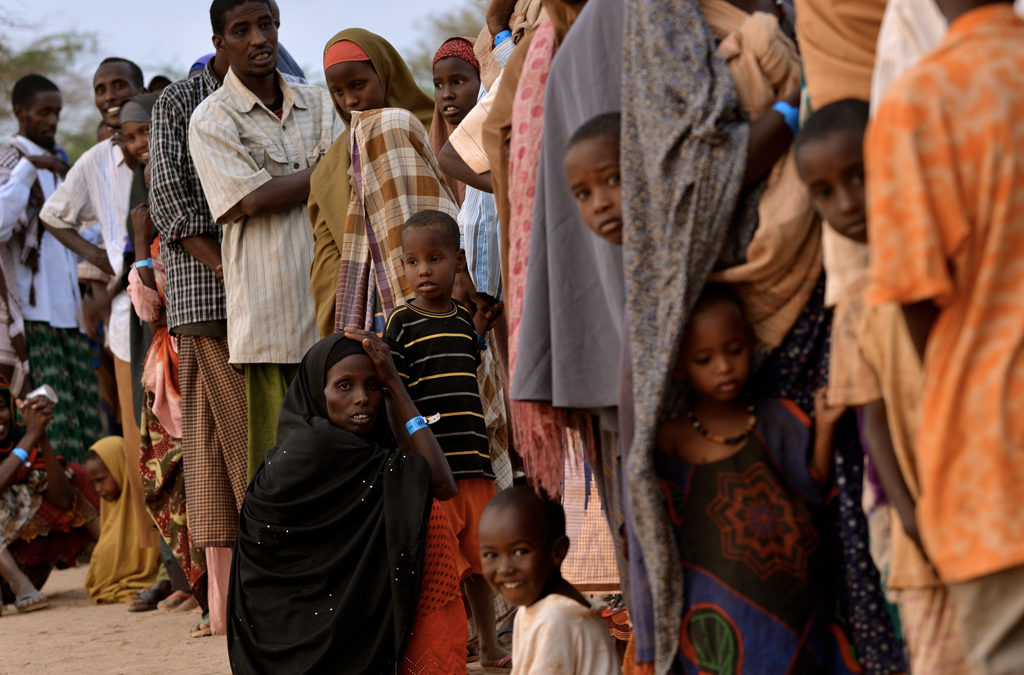John Paul Lederach
The U.S. government’s list of “Foreign Terrorist Organizations” is a central part of a counter-terrorism strategy based on the isolation of individuals and groups who espouse violence defined as terrorism. This strategy makes it illegal to provide material support to those individuals and groups, which increasingly is interpreted to prohibit any contact or consultation with groups on the list.
Peacebuilding, on the other hand, proposes a strategy of engagement. Engagement requires contact and deliberative dialogue, inclusive of all views. It develops processes that focus on accurately understanding the sources of violence and addressing them through a range of nonviolent change strategies.
Proponents of isolation often express concerns about the unintended consequences of engagement. They believe that engagement represents a form of negotiating with terrorists. The deeper apprehension is that contact and engagement with these groups may increase their legitimacy and give them undue recognition. This concern is coupled with a deep suspicion that extremist groups may take advantage of dialogue to increase the violence.
RECOGNIZING THE GRAY AREA
The us/them approach to counterterrorism requires a capacity to distinguish sharply between those who are activists in organizations that espouse terrorism and those who have absolutely no connection to such groups. In the real world, there is no such sharp line, but rather a spectrum.
Especially in regions such as South-Central Somalia, this gray area includes people and organizations that have some form of contact or affiliation — often not by their choice — with people and groups on the designated terrorist lists. This may be simply because they live in a particular area, share a common religious background, or have extended family links, among many other reasons. After considerable years of experience in many of these settings, my own view is that this gray area may be much larger and harder to define than we understand.
According to the literature on the dynamics of conflict escalation, as conflict escalates and polarization sharpens, people face increasing social pressure to join one side or the other. Outside threats may lead to greater internal or in-group cohesion. In highly polarized contexts, people within a group have more contact and interaction with those who share their views and concerns and correspondingly much less with those of differing perspectives. This creates greater opportunity for extreme views to rise to prominence. Tolerance for ambiguity diminishes. Little or no room exists for questions or the expression of alternative views.
Engagement seeks to transform, through consultation and dialogue, the justification for violence and the support it may receive.
Here we find some of the most intriguing responses to the two approaches. Engagement seeks to transform, through consultation and dialogue, the justification for violence and the support it may receive. Contact and conversation create mechanisms for people with competing views to interact. The very existence of alternative conversations demands more from an organization’s leaders than facile and monolithic explanations about why violence is needed and justified. Isolation, on the other hand, decreases outside contact and the introduction of alternative views. As a result, it may well strengthen the control of extremist leaders rather than reduce their sphere of influence.
ALTERNATIVES TO VIOLENCE
Isolation may be driven by a desire to control future acts of terrorism, but it does little, if anything, to address the complexity of the contexts where the approach has been applied. As a strategy, it does not contribute to mid or long-term change.
Engagement incorporates concrete ideas about change. It is not meant to provide a policing function or to be used to control particular acts of terrorism in the short-term. If engagement is robust and active, however, particularly in the form of ongoing negotiations, it offers opportunities for presenting alternatives to violence.
To shift extremist leaders and the wider society in which they operate away from violence and toward nonviolence, we must engage with all levels of a movement’s leadership. In particular, given that many extremist movements rely heavily on youth, we need strategies that consider the development of new and alternative leaders. Isolation as a blanket policy holds little promise for change. Engagement strategies, however, focus on the conditions from which violence emerges, locating and creating opportunities that make change possible.
John Paul Lederach is professor of international peacebuilding at the University of Notre Dame’s Kroc Institute for International Peace Studies. This post is adapted from the new report “Somalia: Creating Space for Fresh Approaches to Peacebuilding.” (pdf).



